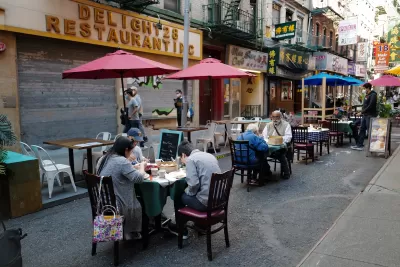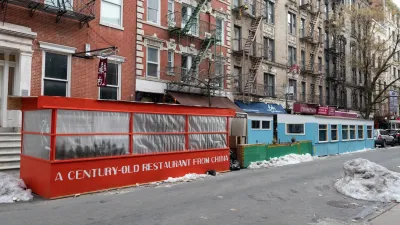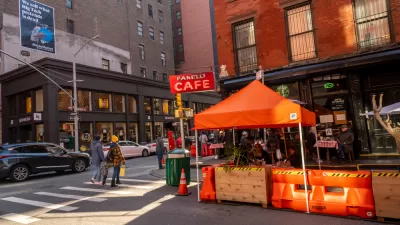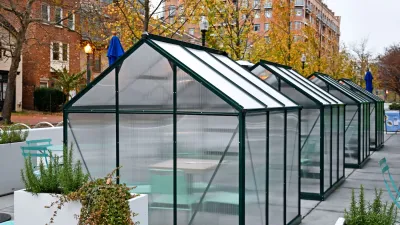Restaurant owners say the city’s new outdoor dining program makes it too difficult and expensive to operate al fresco setups.

Many of New York City’s outdoor dining structures are being removed to make way for (mostly free) parking after restaurants and bars failed to make them compliant with the city’s new requirements.
According to a report by Kevin Duggan in Streetsblog NYC, businesses with non-compliant designs had to take down their setups by November 1, while compliant businesses must remove them by November 29, since the outdoor dining program doesn’t apply in winter months. The new rules, which call for a public hearing for new outdoor dining applications, require that structures be easily removable and lightweight, banning fully enclosed hard structures.
Restaurant owners say the seasonal program makes operating an outdoor dining area more expensive since they must pay for removal and storage during the off-season, and many say they will stop offering outdoor dining altogether. “The numbers of sheds dropped significantly after the new regime first kicked in over the summer, with around 3,000 applications for roadway and sidewalk cafés as of late September, according to the Department of Transportation. Transportation officials estimate that the program peaked at 6,000 to 8,000 participants, including some 5,000 setups as of this summer.”
FULL STORY: Parking? Lots! Outdoor Dining Structures Are Coming Down Across the City

Montreal Mall to Become 6,000 Housing Units
Place Versailles will be transformed into a mixed-use complex over the next 25 years.

Planetizen Federal Action Tracker
A weekly monitor of how Trump’s orders and actions are impacting planners and planning in America.

DARTSpace Platform Streamlines Dallas TOD Application Process
The Dallas transit agency hopes a shorter permitting timeline will boost transit-oriented development around rail stations.

Interactive Map Reveals America's “Shade Deserts”
Launched by UCLA and American Forests to combat heat-related deaths, the tool maps the shade infrastructure for over 360 U.S. cities.

Bicycles and Books — In Sacramento, Libraries Now Offer Both
Adult library card holders can check out e-bikes and e-trikes for up to one week.

Colorado Landfills Emit as Much Pollution as 1M Cars
Landfills are the third-largest source of methane pollution in Colorado, after agriculture and fossil fuel extraction.
Urban Design for Planners 1: Software Tools
This six-course series explores essential urban design concepts using open source software and equips planners with the tools they need to participate fully in the urban design process.
Planning for Universal Design
Learn the tools for implementing Universal Design in planning regulations.
City of Mt Shasta
City of Camden Redevelopment Agency
City of Astoria
Transportation Research & Education Center (TREC) at Portland State University
US High Speed Rail Association
City of Camden Redevelopment Agency
Municipality of Princeton (NJ)





























